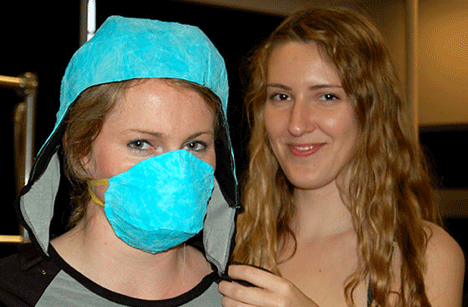Undergraduate Designer Makes Nanostructured Clothes That Block Poisonous Gases
And look stylish at the same time

A new type of cloth can guard against noxious gases and odors by trapping their molecules inside its fibers, according to Cornell University. A Cornell undergrad fashioned the cloth into protective head gear, seen here in a summery shade of turquoise.
The cloth is made of cellulose fibers and metal-organic framework molecules, crystalline compounds that form a porous structure. The pores can trap and store molecules of gas, serving as wearable filtration systems.
Metal-organic frameworks are often studied for their ability to store beneficial gases, like hydrogen for a fuel cell, for instance. There are several ways to build MOFs, including the use of petroleum-derived chemicals and even edible compounds. But they usually come in a powdered form that is sensitive to air exposure, making them difficult to weave into a garment.
Marcia Da Silva Pinto, a postdoctoral researcher in fiber science, and assistant fiber science professor Juan Hinestroza spent months figuring out how to bind the MOFs and cellulose fiber together. Now the researchers are able to make large surfaces of fabric coated with the MOFs, and hope to make integrated nanofibers next, Hinestroza said.
The fabrics would be tailored to fit a specific compound by designing pore sizes that correspond to the molecular size of the gas.
Jennifer Keane, a fiber science and apparel design major, worked with Da Silva Pinto and Hinestroza to make a gas-absorbing hood and mask. The project received funding from the Department of Defense’s Defense Threat Reduction Agency.
[Cornell News via MedGadget]